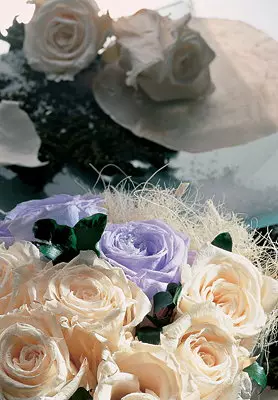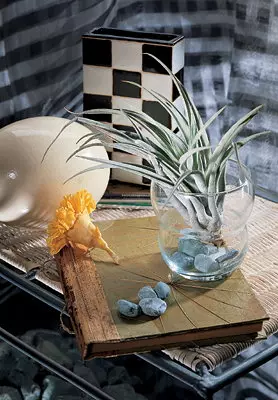Decor of dried and artificial plants. About their place and role in the interior.
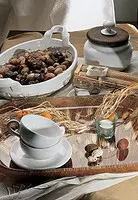
It is now difficult to imagine an architect, who, as it was in the past, would develop everything in its construction, up to the slightest details of the decor. The mass production of the necessary for the arrangement of housing or the "spare parts" (door blocks, eaves, plinths, lamps, etc.) reduces the task of the author of the project to their correct selection. What is not easy. In general, a modern architect, engaged in apartments, it would be more correct to call the decorator. After all, even if his work begins with redevelopment, it deals with the already ready "box" where the interior will be inscribed. And well, if the architect adheres to the principle of compliance of the newly created interior of the stylistics of the entire structure. Even the usual typical panel house, this is "architectural nothing," can not not ask his framework. After all, he is a grand-nephew of the creations of the famous Le Corbusier.
But today we are interested in the decor. Theoretically, you can imagine that the task of creating the interior is set before the designer, pushing out from decorative decorations. For example, from a collection, or paintings that have been inherited, or a beloved since childhood (or brought from afar) a significant subject. The situation, frankly, is quite atypical, for the majority of us have neither attachments, nor history, and life begins with a clean leaf every time. But it would still be interesting to trace the path of creating the interior, the starting point of which is the decor. This can also be guided for interesting planning solutions, since the location of the "main" subject (or subjects) must be determined already at the design stage. Niche or, on the contrary, rizalit, podium or just a common thing, where this decorative subject will be, requires good lighting. And not only artificial, but also natural. The location of the subject should not keep doubts about its decisive role in the interior. But, changing the general plan, decorative dominant is not obliged to "pull up" the surrounding space to its stylist. Rather, the interior must be stylistically different and more neutral, otherwise, there is something around that everything, actually, will be lost in it.
However, let us return to the usual situation, when decorative elements serve only an addition, emphasize, giving home a residential species, and the interior is more completed and complex. Even if we are dealing with high-tek, without such little things it does not cost, let the concept of decor and contradict the essence of this style. Without watches, lamps and completely without dishes it is impossible to exist. However, in the presence of everything you need to live in the High-Tekovsky environment, few - and correctly. To do this, you need to be either completely self-sufficient, or completely poor. In other cases, attempts to fit can be brought to madness.
Well, in less extreme interiors, the role of a variety of substantive filling, all sorts, as well as works of art is quite difficult to overestimate. The method with which it is customary to fill its home with decor, otherwise, as eclectic, you can not call. It is not known, it's good or bad in terms of the development of the decor as a branch of visual arts. But from the point of view of a modern person who is in the stream of time and fashion (and even in the latter), the approach seems to be true. And the truth, we went back in the past when I wanted to furnish the whole room or even an apartment with one headcard. Mix the items of various eras and styles are the passion and art of the modern decorator. And the most important thing in this process is to choose everything so that each element is harmoniously combined with the rest and together they formed a complete composition.
It is clear that the task is best solved by those who are familiar with the styles of past centuries and the last time who engaged in the composition in all her species, and Plus also painting (to see color). But intuition plays here not the last role. And you can, as on notes, play the compositions presented to your attention on these pages.
The theme of today's selection is a decor of dried and artificial plants. About their place and role in the interior, perhaps, it is worth saying. It is known that living greens can decorate any home. No wonder wise Chinese recommend three things that make a dwelling cozy: green plants, aquarium fish, lower light. Thus, one of the most undisputed details of the decor - flowers in pots. Unusual decorations from natural materials captured in photographs are, as it seems to us the next level of development of this topic. With artificial plants it is more difficult, many are not acceptable at all. But modern quality of manufacture in combination with proper use can make objects of this kind are simply indispensable in the interior of your home.
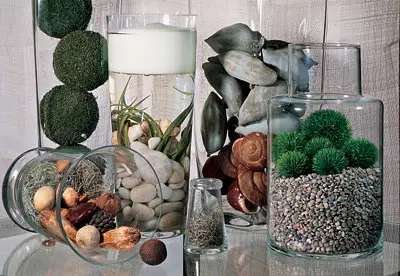
Six large decorative VAZ, probably too much for a residential interior. But here are two of them on a low console in simpleness will give your home refined view. So dare!
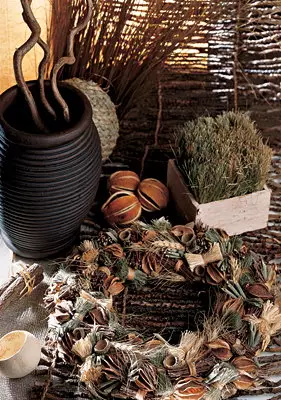
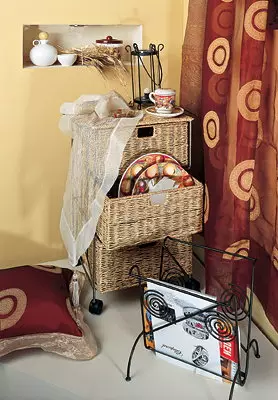
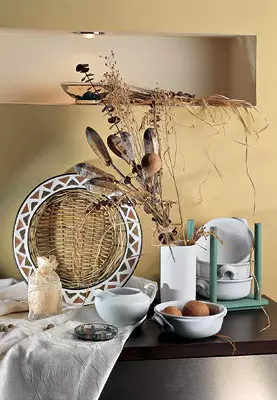
And of course, drunks. Bundles of fragrant herbs are visible everywhere. They are designed to fill the house by the smells of the fields of Provence.
So what is attractive for the human eye? Easy or complexity? If simplicity, then it is likely when it is identified with clarity. And if the complexity, then it is solid, with a clear coenting of individual parts.
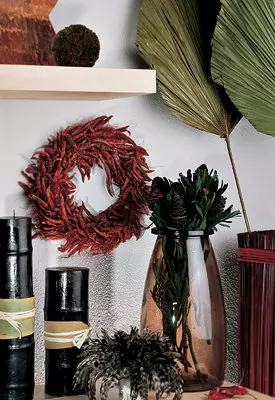
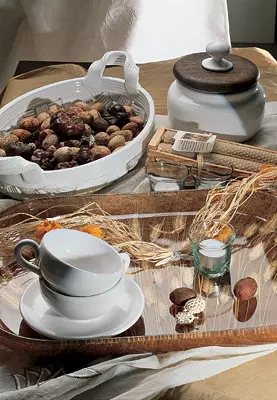
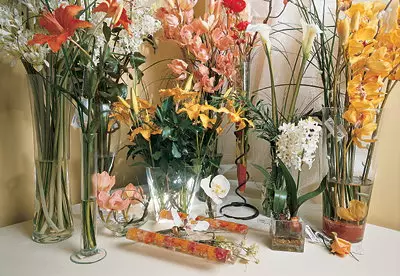
Artificial flowers do not put where it is customary to have alive. And vice versa. Say, only live flowers can be on the dinner table. Live flowers or dried flowers are appropriate on the coffee table, dresser or desktop. Inside glass cabinets, on the shelves, in niches - dried flowers or artificial flowers. These compositions look well in the floor vases. But only if you have no small children or playful cats at home.
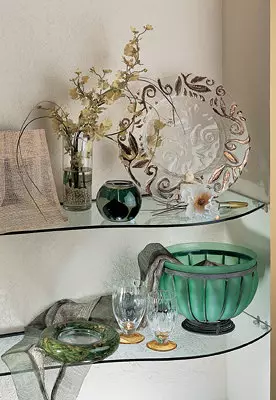
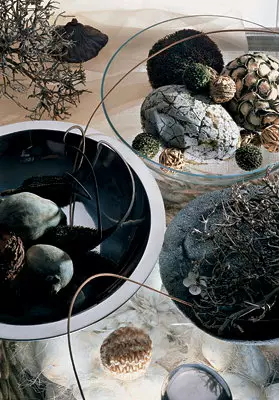
For the first time, the importance of the material finishing of surfaces demonstrated MIS Van der Roe. It happened in 1929 on the Barcelona exhibition. The interior of the pavilion built by the master, who later became the prototype of the fashionable style of the whole era, was based on two things: proportions and beauty of materials. After 70 years, Dutch manufacturers of decorative jewelry also began experimenting with materials: light foam balls of different sizes They are wrapped with moss, natural stones, shells, straw and dried flowers. It turns out a miracle as beautiful!
But the alabastral egg is not saved by moss. Moss is grown on it with a simple way available to everyone. It is better not to use it at home, but in the garden plot. For example, you arranged a mountaineering, but it looks like rarity unfulstly as toy. Or, let's say, they set the sculpture, and she is too new. Take a bioogurt and apply it to the surface of an ordinary tassel. Soon everything covers moss, as if there is already a whole century here.
In a metal vase there are dried fruits of Baobaba and Ehinops. Light decorative fabric in the background - organza from Da Vinci (Germany).
